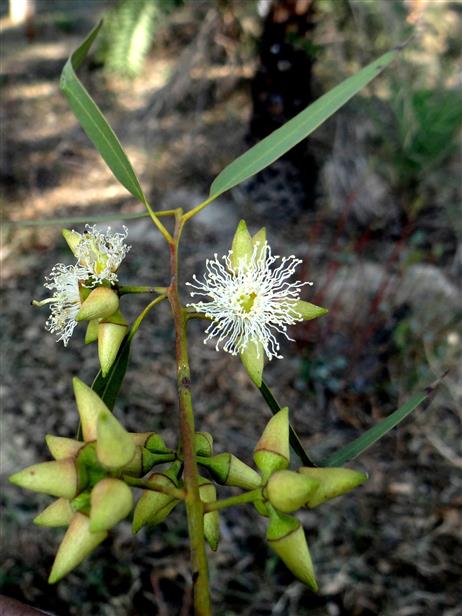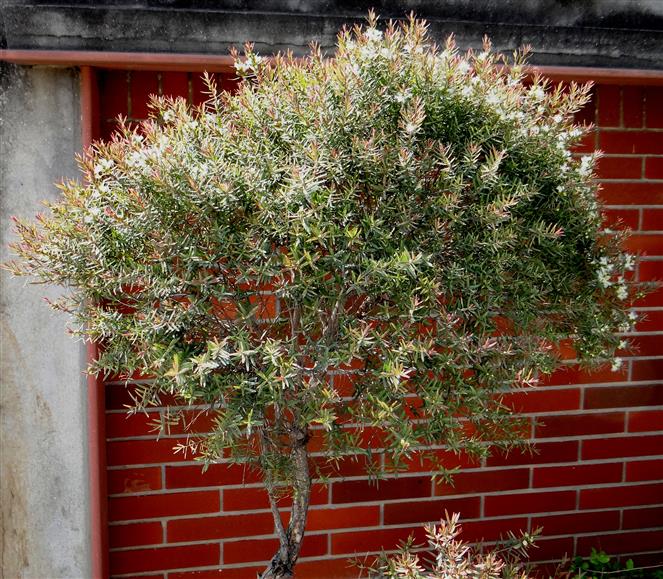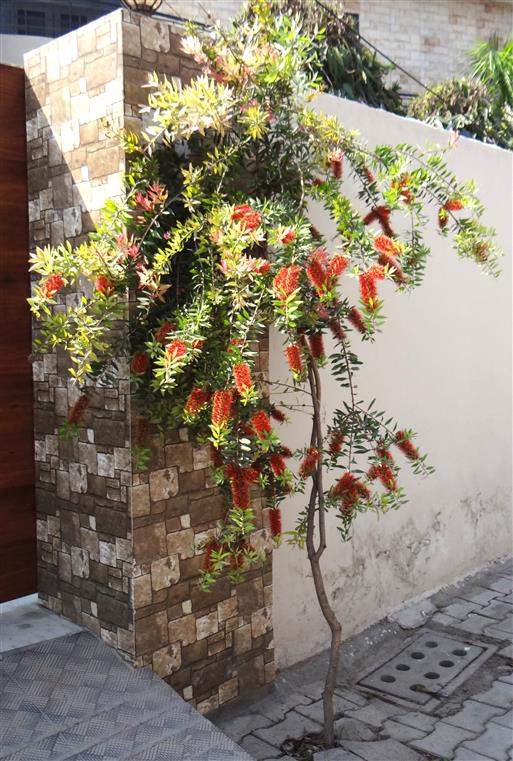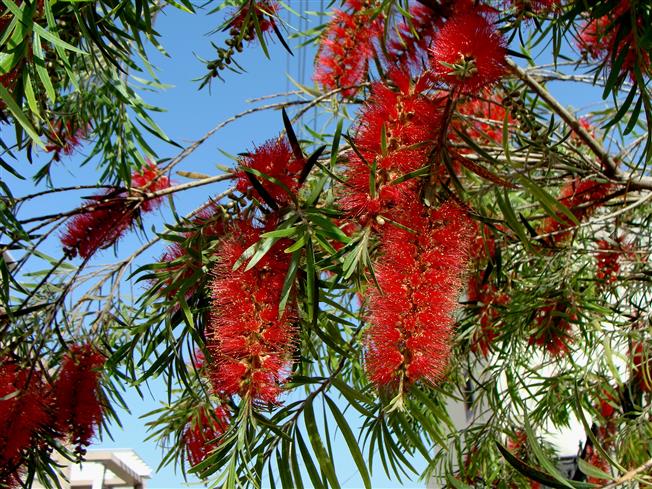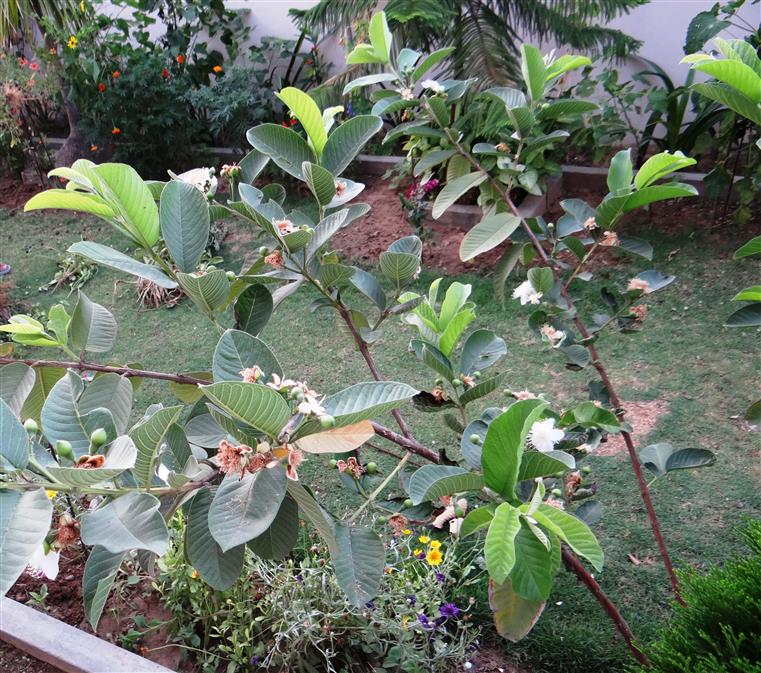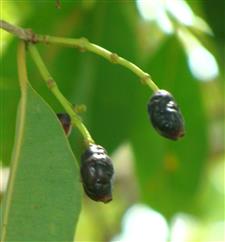MYRTACEAE
Trees or shrubs, evergreen, usually with oil-containing cavities in leaves, branchlets and flowers. Stipules absent or small and caducous. Leaves usually opposite, entire, often with and intra-marginal vein near margin. Inflorescence axillary and terminal, cymose but variously arranged, 1-many-flowered or racemes, panicles or spikes. Flowers usually bisexual, occasionally polygamous, actinomorphic, perigynous or epigynous. Hypanthodium (calyx-tube) usually adnate to ovary and prolonged above it, limb 4-5-fid or -partite, persistent or deciduous, valvate or imbricate or forming a calyptra that falls as a unit or tears open. Petals 4 or 5, occasionally absent, free or connate into calyptra. Stamens usually numerous, in 1 or more whorls, free or connate or in bundles which are opposite the petals; anthers bithecous, dorsifixed, basifixed or versatile, dehiscence longitudinal or rarely; connectives usually terminating in 1 or more apical glands. Carpels 2-5 to many, syncarpous, ovary inferior, semi-inferior or superior, 1-locular with 1-many ovules or more often 2 to many-locular with many ovules, placentation axile, subapical or basal; style simple; stigma simple. Fruit a berry, drupe, capsule or nut-like. Seeds 1-many.
127 genera and about 5774 species
